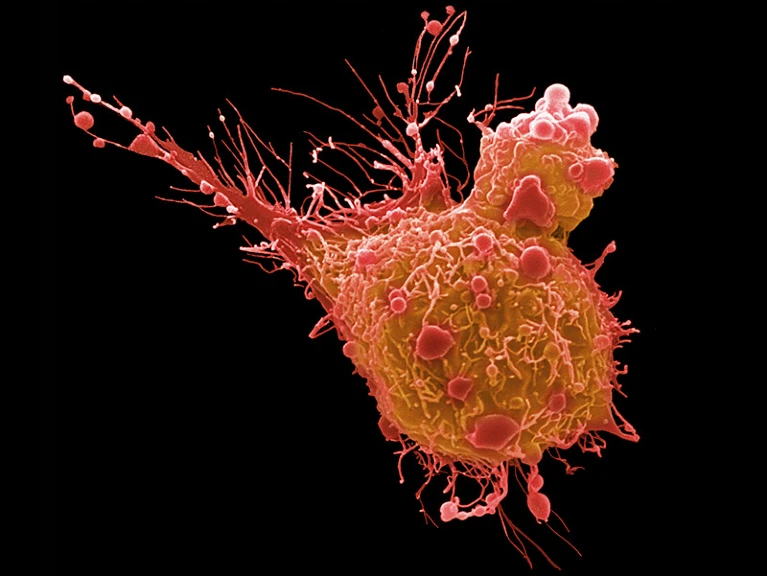This one could have been in the weird news thread.
Are these moths blinding children?
September is typically the end of the monsoon season in Nepal — and the time of year when eye clinicians begin to worry. A mysterious and debilitating eye infection, known as seasonal hyperacute panuveitis (SHAPU), starts afflicting people, mainly children, in some parts of the country. Symptoms typically start with a painless reddening and loss of pressure in one eye. If the condition is not treated within 24 to 48 hours, the children are at risk of losing their eyesight.
But in 2023, researchers in Nepal are more committed and better equipped than ever before to determine the cause of this puzzling condition. For the first time, they have environmental surveys, genomic sequencing and a reporting system in place to track down its source. However, they are up against major funding challenges, and this year, reports of the disease have changed. “The cases have come from previously unreported territories and the severity of symptoms has also become quite unpredictable,” says Ranju Kharel (Sitaula), an ophthalmologist at the Institute of Medicine at Tribhuvan University in Kathmandu.
Every two years
The disease itself is not new. Back in 1979, ophthalmologist Madan P. Upadhyay, now chair emeritus at the BP Eye Foundation in Kathmandu, was woken by the sound of his doorbell. Outside was a man clutching his three-year-old daughter, her right eye inflamed. The scene was familiar, matching cases Upadhyay had seen before — first in 1975, and again in 1977. Upadhyay named the mysterious illness SHAPU, and noted that, inexplicably, cases seemed to spike every two years.
The condition turned out to be more serious that doctors had first realized. “Initially, we thought that the condition was just an inflammation but it would shrink the whole eyeball, and treatment options couldn’t save the vision in kids,” says Anu Manandhar, an uveitis specialist at the Tilganga Institute of Ophthalmology in Kathmandu.
The cause remains unknown, meaning that clinicians are left frantically trying various treatment options, including antibiotics, steroids and other eye medications — with no guarantee of success. Sometimes the drugs work; in other cases the same combination of treatments has little effect.
Until 2021, SHAPU had limited recognition, and only a few cases each year were documented in hospital records and scientific journals. However, in 2021, the country faced a particularly large outbreak, with more than 150 cases. This drew considerable attention from the local media. As a result, clinicians were better prepared for 2023.
This year, doctors have a system for timely reporting of cases across the country. This has already helped them to better understand the geography of the disease. “We used to assume that SHAPU cases were confined to the mid-hill terrain of western Nepal. Now, we are seeing cases reported in central Nepal, including Kathmandu, and even in the eastern highlands, including the Everest region,” Kharel says.
The reporting system has also shown that the outbreak in 2023 has been particularly bad. “In the past two months, we have registered nearly 100 cases of SHAPU,” says Kharel.
Scientists had hoped that a simple laboratory culture from the infected eye would reveal the cause of the infection. But the results weren’t clear-cut. The tests detected various microorganisms, including Staphylococcus and Streptococcus bacteria. “Other culture studies have even revealed the presence of viruses such as human anelloviridae and varicella-zoster virus, and even some fungi,” Kharel says.
However, researchers noticed that many people anecdotally mentioned that they had been in direct or indirect contact with a ‘white moth’ before the onset of the illness. In a survey2 first published online in 2020, Kharel and her team found that the only statistically significant difference between people with SHAPU and a control group was that the individuals with SHAPU were nearly seven times more likely than the control individuals to report having had contact with butterflies or white moths. White moths of the genus Gazalina are known to swarm through Nepal at the end of the monsoon season. The results of Kharel and colleagues’ survey, along with the timing of Gazalina moth hatching, “present a strong case for the link with the Gazaline moth”, says Daya Ram Bhusal, an entomologist at Tribhuvan University.
Following this lead, for the past couple of months, Bhusal and his team have been surveying major districts of western Nepal that have had repeated outbreaks of SHAPU in the past. They are collecting data from places where moths have been recorded, and examining ecological factors including temperature, humidity, vegetation type and altitude.
"We also need to confirm the moth’s taxonomic classification,” Bhusal adds. He says that three species of moth from the Gazalina genus are recorded in Nepal, and all are white. Any or all of the species could be associated with the disease, he says. His team also plans to conduct biochemical analyses comparing the vitreous fluid from an infected eye with compounds from moth hairs to determine whether a specific toxin found in moths is driving the inflammation.
Genetic material
It’s not clear why the disease infects some people but not others. To try to resolve this question, Kharel and her team are collecting samples from the affected and unaffected eyes of people with SHAPU, and from family members. They will screen these samples for genetic material from bacteria and viruses to determine whether there is a culprit microorganism.
Although researchers are making progress on SHAPU, they don’t have the funds to do everything that is needed. Using advanced DNA sequencing allows researchers to look for genetic material in a sample to shed light on the types of microorganisms that are present. However, Nepal doesn’t have a metagenomic sequencing laboratory, so samples often have to be shipped to the United States and other countries for analysis. This is expensive and takes time. The Nepalese government has increased its support in recent years, but the project is still chronically short of funds.
Kharel says that research initiatives are heading in the right direction, but that the changing geographical distribution of the disease and the range of symptoms reported “keep making SHAPU more mysterious”. Hara Maya Gurung, an ophthalmologist at the Himalaya Eye Hospital, in Pokhara in central Nepal, has diagnosed about 30 people with SHAPU so far this season. “This year’s cases seem so weird as no patient mentioned coming into direct contact with the white moth,” Gurung says. And this year, individuals often presented with complications in the cornea, iris and sclera (the white of the eye), which are very unusual for SHAPU, she adds.
Kharel hopes that a solution to this long-standing enigma is on the horizon. But for the time being, it seems that Nepal will continue to grapple with these tragic biennial outbreaks.
Evidence for the moth:
We identified 35 cases and 105 controls; 71.4% were children≤16 years (38-day infant to 50-year-old). All were immunocompetent individuals, males were 57.1% and females 42.9%. Potential risks such as visible moths/butterfly activity, contact with livestock, and attending mass gatherings of people were not reported more frequently in cases vs controls in univariate analyses. Differences in possibly protective factors such as self-reported mosquito net use, light off at night while sleeping, and habit of hands/face washing after physical contact/touch with any insects/butterflies/birds were not statistically significant between both groups. In multivariate model, SHAPU cases were significantly more likely than controls to report physical contact with butterflies/white moths (Adjusted OR:6.89; CI:2.79–17.01,p < .001).










